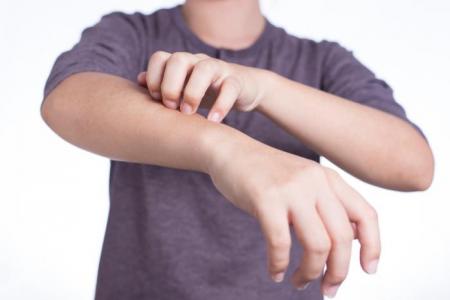HWN Jobs
- NEIMETH INTERNATIONAL PHARMACEUTICALS PLC JOBS
- RIVIAN GROUP JOBS
- PALLADIUM 2016 JOBS
- GRADUATE TRAINEE JOBS AT OBAX WORLDWIDE LIMITED
- DIAGNOS HEALTHCARE JOBS
HWN Blogs
- Classical heart healthy foods on HWN BLOGS
- Classical Warning Signs When The Human Liver Begins To Fail on HWN BLOGS
- Myths About Hygiene, Soaps, Germs, Sweat and Smell on HWN BLOGS
- Hernia does not heal on its own on HWN BLOGS
- Classical Essential Oils That Improves Focus Cum Memory on HWN BLOGS
news - Harmful staphylococcus aureus kept in check by friendly bacteria on HWN STAPH back to all News
Harmful staphylococcus aureus kept in check by friendly bacteria on HWN STAPH

Scientists have discovered that in healthy skin, harmful Staphylococcus aureus is kept in check by its friendlier cousins, whose numbers are depleted in people with atopic dermatitis, the most common type of eczema.
In a paper published in Science Translational Medicine, a team from the University of California-San Diego (UCSD) and colleagues describe how they isolated and grew commensal or friendly bacteria that secrete antimicrobial peptides and transplanted them to treat patients with atopic dermatitis.
Humans are alive with trillions of microorganisms that live in and on the body and outnumber human cells tenfold.
Scientists are increasingly coming across examples of how these microbial cells and their genetic material - known as the microbiome - can promote or disrupt human health via their intimate relationship with the immune system.
The researchers behind the new study screened 10,000 colonies of commensal bacteria found on human skin to determine how many had antimicrobial properties. They also investigated how common they were on healthy and non-healthy human skin.
First author Dr. Teruaki Nakatsuji, a project scientist in the department of dermatology at UCSD School of Medicine, explains what they found:
We discovered antimicrobial peptides produced by bacteria commonly found on healthy human skin. These novel antimicrobials have selective activity against pathogenic bacteria, but do not harm other commensal bacteria that have a beneficial effect to us.
Protective bacteria produce antibiotic against S. aureus
According to the National Eczema Association, 32 million people in the United States have eczema, including 18 million with moderate to severe eczema or atopic dermatitis - which normally appears as a rash on arms, legs, and cheeks.
Previous research had shown that the disease-causing bacterium Staphylococcus aureus aggravates skin conditions like atopic dermatitis.
S. aureus is a common cause of Staph infections. It can develop into the antibiotic-resistant form known as methicillin-resistant S. aureus, or MRSA - a leading cause of death resulting from infection in the U.S.
Dr. Nakatsuji and colleagues found that other strains of Staphylococcus - including Staphylococcus hominis and Staphylococcus epidermis - residing on the skin of healthy people produce a previously unknown antimicrobial peptide that checks the growth of S. aureus.
When they colonized pigskin or mice with these protective strains of Staphylococcus, they found it reduced S. aureus replication.
Senior author Richard Gallo, professor and chair of the department of dermatology at UCSD School of Medicine, says when you look at the skin of people with atopic dermatitis, you find their bacteria are not doing the same thing as the bacteria on the skin of healthy people, which are producing previously undiscovered antimicrobial peptides.
After isolating the good bacteria and growing it, we were able to transplant it back to people who were deficient in it and it had an immediate impact by reducing the amount of S. aureus on the skin, he adds.
The team is already carrying out a phase II clinical trial to evaluate whether prolonged use of one of the most potent friendly bacteria offers long-term protection against S. aureus and alleviates atopic dermatitis.
Using a natural antibiotic produced in the skin is better than using a pharmaceutical drug because it does not kill protective bacteria, says Dr. Nakatsuji, adding that: "Antibiotic resistance is not likely to occur because the bacteria therapy is attacking pathogens by multiple different ways at once.
We now have a rational therapeutic approach for atopic dermatitis by using bacterial transplant technology. It appears that people with this disorder will need to have it reapplied because their body does not naturally promote the growth of these organisms. The good thing is this is easy to do because it's just a cream.
Source: MedNewsToday, HWN Africa.
: 2017-02-26 17:59:57 | : 2620
HWN News
- First Polish infant to survive on extreme dialysis on HWN MEDICAL MIRACLES
- Drug resistant tuberculosis end game on HWN INSIGHTS
- Too many women opting for caesarean sections (CS) to give birth on HWN SEX EDU
- The intelligent, strong and fearless Nurse that conquered Ebola on HWN ARCHIVE
- Medhi Benatia, down with injury on HWN SPORTS






